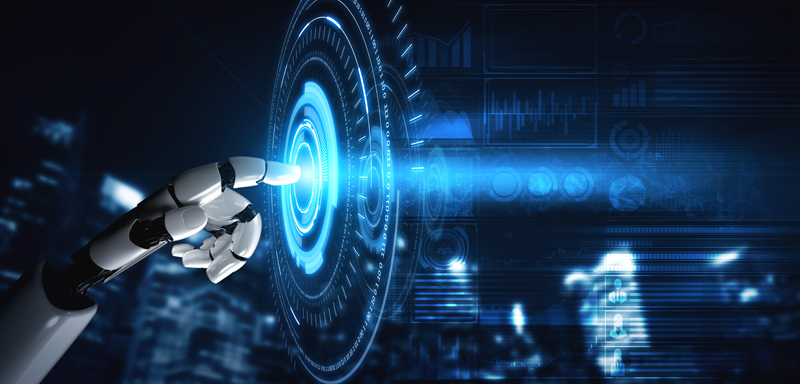Home >Technology peripherals >AI >Driving Intelligent Automation: The Role of Generative AI
Driving Intelligent Automation: The Role of Generative AI
- WBOYWBOYWBOYWBOYWBOYWBOYWBOYWBOYWBOYWBOYWBOYWBOYWBforward
- 2024-01-25 14:33:13892browse

In 1997, the world witnessed a groundbreaking showdown between reigning chess champion Garry Kasparov and IBM’s Deep Blue AI. Deep Blue's resounding victory marks a paradigm shift, showing that artificial intelligence is not just a scientific curiosity but a force capable of challenging human intelligence. Fast forward to today, and AI has been seamlessly integrated into every aspect of daily life, from digital assistants that respond to voice queries to automated factories controlled by predictive analytics software.
What was once hesitancy about machine cognition has turned into indifferent acceptance of artificial intelligence as an embedded status quo. However, in the midst of this gradual assimilation, a revolutionary subset of AI emerged – generative AI models. Capable of generating new and original content, these models promise to radically expand the boundaries of machine creativity, providing exciting possibilities for augmenting human creativity.
Unlike traditional AI that relies on rules and logic, generative AI dynamically learns patterns from massive data sets. It can generate human-like text, images, audio, code, etc., opening up avenues for innovative applications in various fields. The technology has recently taken center stage in the field of intelligent automation (IA), promising to significantly improve the operational efficiency of enterprises.
Intelligent automation covers technologies such as Robotic Process Automation (RPA), Intelligent Document Processing (IDP) and conversational artificial intelligence. The purpose is to automate repetitive tasks and thereby liberate human work. Some leading enterprise automation platforms have integrated generative AI to enhance their product capabilities, provide synthetic data sets to enable better bot training, and create human conversation-like experiences.
The emergence of generative artificial intelligence has brought unprecedented advancements, enhancing intelligent automation in innovative ways. Generative models can accurately simulate real-world data samples, thereby improving the training effect of document processing robots. They automatically transcribe call center conversations, generate key summaries to support action, and contextually interpret customer queries for more natural conversational exchanges. In addition, generative AI can quickly create marketing content and personalized messages, effectively saving a lot of time and resource investment.
The fine-tuned content is as follows: Cloud infrastructure leaders like Microsoft and AWS are driving the democratization of build process automation. By providing low-code/no-code solutions, businesses of all sizes can take advantage of the exponential impact of technologies like RPA and generative AI. These platforms also provide pre-built connectors to seamlessly integrate hundreds of business applications while simplifying the development process for citizen developers through intuitive interfaces. Additionally, a flexible pricing model allows teams to scale on demand, allowing them to experiment and innovate without prohibitive costs.
The emergence of generative artificial intelligence marks a new frontier and heralds a renaissance of automation. It extends the core pillars of technology transformation beyond simple cost reduction. By integrating advanced generative models into an enterprise's automated systems, we can achieve exponential improvements in resiliency, scale, cost, and productivity. These real-world examples of generative AI-based automation platforms highlight their transformative potential, while the continued evolution of industry standards and regulations ensures responsible deployment.
The importance and future prospects of the generative artificial intelligence supply ecosystem are attracting attention. It is considered to have huge potential to redefine business efficiency. The symbiotic evolution of generative AI and IA brings unprecedented opportunities for intelligent automation, unlocking tremendous value, creativity and meaning, and increasing the productivity of cross-functional teams. At the same time, the democratization of generative AI also accelerates decentralized innovation, ensuring that this transformative technology is realized in every corner of the technology field.
The above is the detailed content of Driving Intelligent Automation: The Role of Generative AI. For more information, please follow other related articles on the PHP Chinese website!
Related articles
See more- What is the most advanced form of artificial intelligence in the future?
- 35 Generative AI Tools Businesses Should Use in 2023
- Apple has created 28 new AI positions and wants to use generative artificial intelligence to change iPhones and iPads
- Baichuan Intelligence launches generative artificial intelligence registration and fully opens public services
- Niantic announces AR game 'Peridot” begins using generative artificial intelligence

